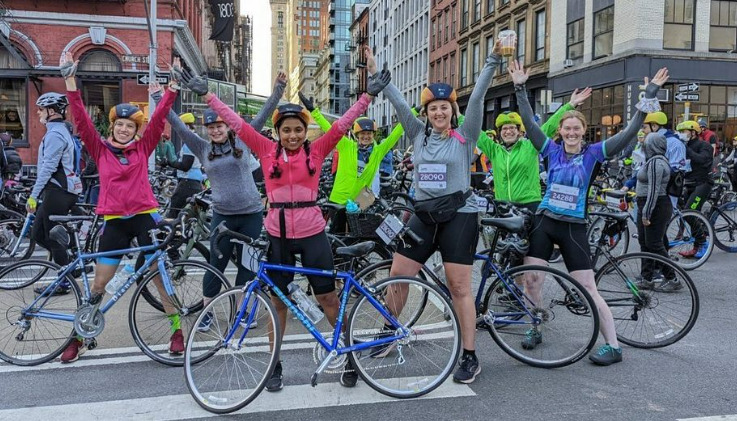By: Maria Boustead
The shorter days, the crispness in the air, the pumpkin spice everything…we all know what it means. Fall is here and winter is around the corner. Yes, the weather is getting cooler by the week but that doesn’t mean that your 2016 biking days are over.
The pleasures of biking through fall and winter are numerous. Fall, with its stunning colors, makes biking through the city’s parks and neighborhood streets a true joy. Winter may lose some of that brilliance but I find the tranquility of the quieter parks and (some) streets to be similarly rewarding.
Not being sure of how to dress for the colder temperatures is a common reason people give for not biking through more months of fall and winter. This is a topic WE’ve seen come up frequently on our Facebook Female Bike Forum, so we’ve culled those discussions for some head to toe suggestions of how to dress differently for fall and winter bicycling:
Head
You may already be wearing a riding cap, but as it gets cooler, opt for a fleece or merino wool cap to keep your head warm. They’re thin enough to comfortably wear under your helmet – although you may need to make a simple adjustment to how your helmet fits. WE suggest getting a cap with ear flaps to keep you extra warm as we move from fall to winter.
A scarf is a versatile accessory that you can push up over your nose and cheeks if you start to feel cold, or loosen around your neck if you start to get overheated. Also, you’ll probably discover that your nose drips a lot more in cooler weather, so having a handkerchief or tissue easily accessible is key.
Torso
Layering your tops is essential to staying warm and comfortable while biking in cooler temperatures. Once you start feeling a little chilly while riding, it’s time to start wearing a polypro or merino wool base layer.
Your next layer should be a fleece tunic to add a layer of warmth to your upper body. You may want to consider investing in a softshell jacket, whose wind-blocking, water-repelling, breathability super powers goes a bit farther than just straight-up fleece to protect you from the weather. And when it starts to get really cold, you can wear both.
Hands
Keeping your hands warm is a must. Not only are cold hands uncomfortable, but have you ever noticed how your hands can seem weaker and slower to react when they’re cold? That’s not good when you need to squeeze your brakes at a moment’s notice to avoid a collision.
Which should you wear: gloves, mittens, or lobster gloves? This question always starts off a debate so just go with what works best for you. It’s most important to choose hand protection that is insulated. Finding hand coverings that let you use your touchscreen without removing them is a plus. And merino wool glove liners are your friend if you need a even more warmth.
Legs
Pulling on some merino wool tights or thermal leggings will make a big difference in how warm your legs feel while biking in colder weather. You can wear these under slacks or skirts, and you can wear more than one pair at once if you need more protection.
Feet
Similar to leggings, you’re going to want to go with layering merino wool socks to keep your feet warm. Several thermal layers will keep your toes toasty warm. Still not enough? Many cyclists swear by warming pouches that you can slip into your shoes (or gloves) to keep your extremities warm. A popular brand is “HotHands” which can be found in drugstores like CVS or in bulk on Amazon.
Keep in mind that different people have different thresholds for temperatures. You might find that you start donning extra layers much earlier or later than others. You might find that your fingertips get cold super fast and your toes overheat, while your best riding buddy experiences the reverse. It takes a little trial and error, but what’s important is finding out what works for you.
WE look forward to seeing you in the bike lanes this fall and winter!
